
Best Companion Plants For Chili Peppers
If you love growing hot pepper plants, but want to do more with your outdoor grow, companion plants are an excellent way to diversify your garden and improve the quality of your pepper harvest. Keep reading to find out which herbs, vegetables, and flowers pair brilliantly with chili peppers.
Companion plants are often underappreciated and underutilised tools when growing chili plants. Not only can they protect your outdoor plants from pests, but they can even attract pollinators, leading to bigger, better harvests and exciting pepper variations (more on these later).
What are the benefits of companion plants for chili peppers?
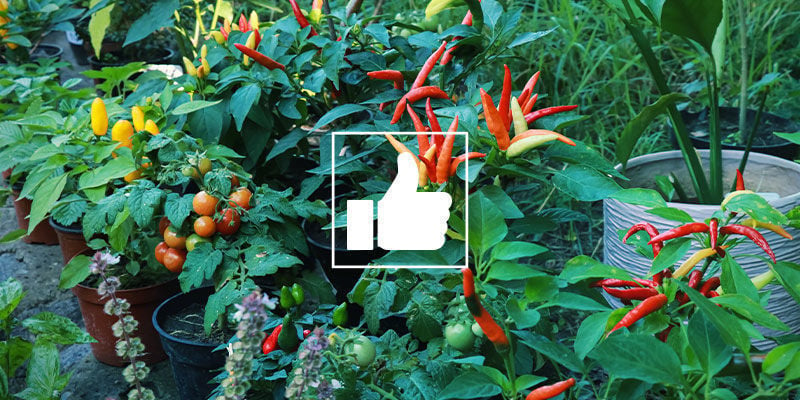
Before breaking down which companion plants you should add to your outdoor (and even indoor) grow, it makes sense to start with why. So, why add other species to your grow when the primary focus is peppers? Well, the benefits of companion planting are as follows:
-
Deters pests: With the right plants, you can reduce the risk of several common pepper pests.
-
Encourages pollination: Although pepper plants are primarily self-pollinators, they still require physical agitation for best results. Surround them with beneficial plants and let insects do the hard work for you.
-
Creates a thriving ecosystem: Many companion plants attract beneficial insects and organisms, improving soil health and limiting weeds.
-
Improves flavour: Some companion species are believed to improve the taste of your peppers when planted close to each other.
In short, picking the right partner for your chili plants makes your growing life easier. That is, of course, provided you know which plants work best. Below you’ll find several fantastic candidates, eager to help your hot pepper plants flourish.
3 chili pepper companion plants: herbs
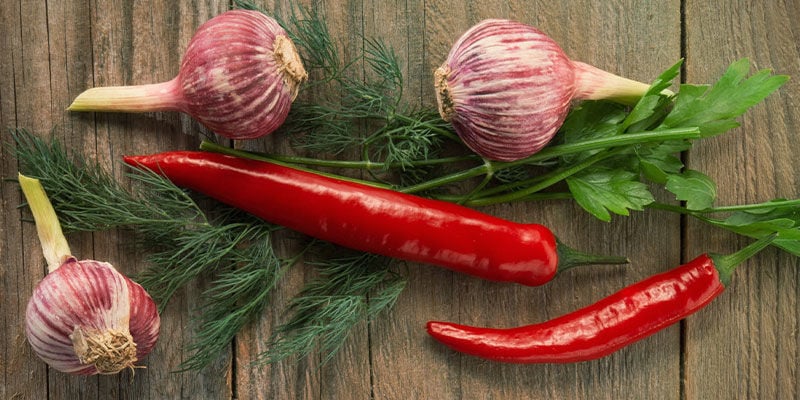
Kicking off our list are three popular herbs. Each brings that little something extra to your outdoor grow, so pick the one(s) that best suits your needs.
Dill
An annual herb, dill is a frequent addition to recipes worldwide. However, its prowess as a companion plant lies not in its taste, but its ability to deter pests. Dill does a fantastic job of keeping aphids and spider mites away from pepper plants, both of which can easily ruin an entire harvest. The herb isn’t just a deterrent either; many growers use dill to attract beneficial pollinators. Dill is pleasing to look at while keeping local insects in check—a win-win for chili pepper growers.
Basil
While some growers attest to the productivity-boosting effect of basil, the plant is more well-known for its pest-deterring attributes. Several basil plants can help keep spider mites, flies, thrips, and even mosquitoes at bay—especially useful if you live in a hot and humid climate. Much of basil’s pest-deterring power comes from a chemical it emits, making it harder for insects to find their target, aka your hot and heavy peppers.
Rosemary
A unique benefit of rosemary as a companion species is the cover it provides. Grown close to hot peppers, rosemary can help to keep the surrounding soil or mulch cool. Even better, this protective quality benefits many of the plants listed in this article, making it a worthy addition to your garden. If you’re planning on an extensive outdoor grow, you can’t go wrong with several rosemary plants.
3 chili pepper companion plants: vegetables
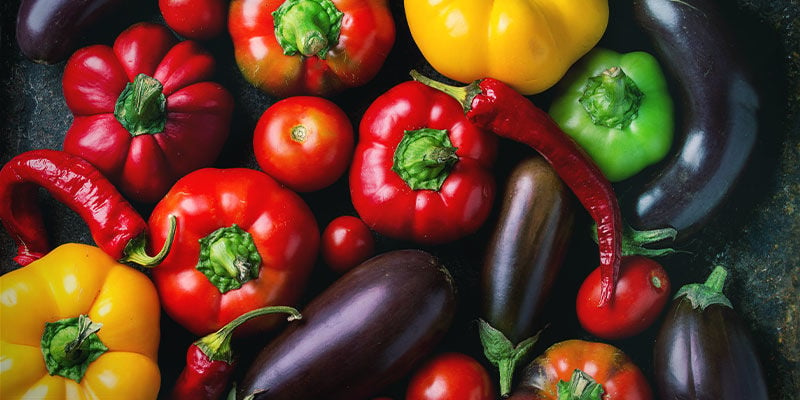
Most vegetables are worthwhile companions to chili plants because they are low-maintenance while still offering several benefits.
Carrots
Many pepper growers favour carrots as companions for two main reasons: weed control and shade. However, the trick is to avoid planting too close to your peppers. You want to keep the soil and mulch around your pepper plants cool, but the plants themselves need as much light as possible to thrive. Provided you get the spacing correct, carrots are a worthy companion plant that pairs well with chili plants and dozens of other vegetables.
Aubergine / eggplant
Aubergines have more in common with peppers than you might think. Not only do they come from the same family (Solanaceae, aka nightshade), but they are usually ready to harvest at a similar time of year. Growing aubergines alongside hot peppers can save you valuable time while also keeping the unwanted attention of pests away from your prized chilies. If you decide to plant aubergines, ensure you rotate your garden beds each year to maintain soil quality.
Bell peppers
We should note that getting the most out of a bell pepper companion plant requires some prior experience or knowledge. Why? Because growing several pepper plants means you can create exciting cross-breeds. If you’ve ever fancied a pepper similar to that of the non-spicy habanada, then cross-breeding is the answer. As a general rule, you’ll want to stick to pepper varieties of the same species; but with endless possibilities, using bell peppers as companion plants can bring some flair and excitement to your outdoor grow.
3 chili pepper companion plants: flowers
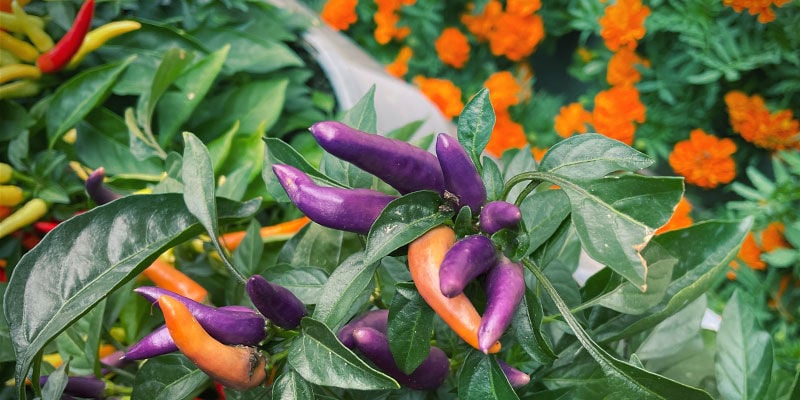
Flowers are ideal for companion planting as they add some colour to your garden while keeping a whole host of pesky insects at bay.
Nasturtiums
Nasturtiums are uniquely positioned as great companion plants due to their pest-deterring abilities and their edible flowers. Not only can you throw them in a salad alongside your peppers, but they’ll help keep aphids, squash bugs, and whiteflies at bay. The trick is to plant nasturtiums roughly 30–60cm from pepper plants. Having them close by (but not too close) will keep pests distracted, preventing them from easily hopping from plant to plant. Several nasturtiums can also attract beneficial predators to ensure your harvest goes off without a hitch.
Geraniums
In terms of planting proximity, the same rules apply to geraniums as outlined above for nasturtiums. But rest assured, spacing out your garden with several geraniums is well worth the effort. They are an excellent trap for Japanese beetles, as the leaves can paralyse, making it easy to manually remove the beetles before they get to your chili plants. More than that, though, geraniums add some delightful colour to your outdoor grow, making the whole experience of pepper cultivation more enjoyable.
French marigolds
Planting a decent amount of French marigolds works wonders for repelling pests such as soil nematodes and potato bugs. There are also some anecdotal claims that marigolds can stimulate the growth of pepper plants. While we can’t say for sure, the simplicity and benefits of growing French marigolds mean you have very little to lose by including them in your pepper garden. Consider planting them alongside the other flowers listed above for the ultimate pest defence.
Can you grow tomatoes and chili peppers together?
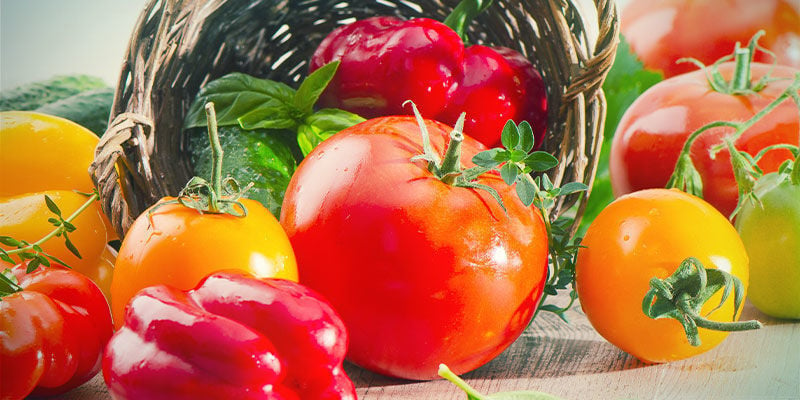
Growing chili peppers and tomatoes is feasible if you follow a straightforward principle—spacing. You can grow most hot pepper varieties near one another as they favour a hot and humid climate. On the other hand, tomatoes like to stretch, and require sufficient airflow between plants. If you want to use tomatoes as a companion plant to peppers, we recommend growing them in the same garden bed, just not side by side.
If you’re someone that grows year after year, rotating said garden beds is another great idea. Doing so helps to reduce the risk of pests and disease ruining plants before they’ve even had a chance to sprout.
Which plants should you avoid?
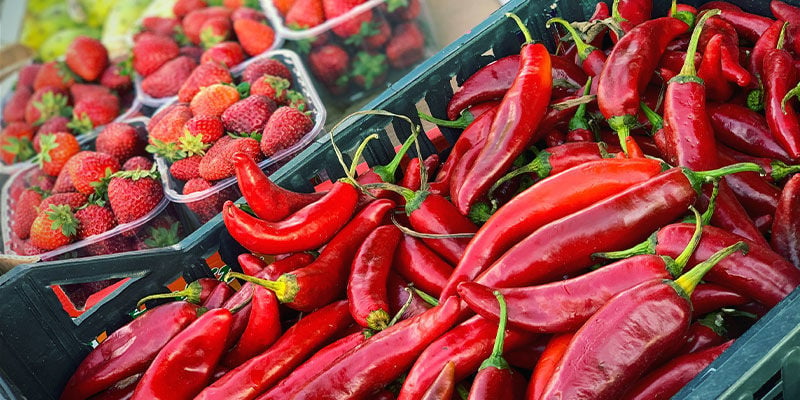
The good news is there are only a few plants you can’t use as companions for chili pepper plants. That said, here are the key offenders:
-
Fennel: If you’re a fan of fennel, it should be planted in a garden bed separate from your peppers. The plant gives off a chemical that can inhibit the growth of nearby vegetables, including your beloved hot chilies.
-
Potatoes: Grown in close proximity, potatoes can spread disease and pests to your plants. They also come from the same nightshade family, meaning greater competition for the same nutrients.
-
Strawberries: As tasty as they are, strawberries are susceptible to fungus (Verticillium) and mould that can easily spread to your hot pepper plants.
As you can see, there are dozens of plants that not only benefit your pepper plants, but introduce some fantastic diversity into your garden. With a little planning, you can easily grow multiple herbs, vegetables, and flowers alongside your favourite pepper varieties. And given that many of the plants listed above are tasty in their own right, they work brilliantly with peppers both before and after harvest.
-
 9 min
5 October 2021
Top 15 Hottest Peppers In The World (2025 Edition)
How does a chili become the hottest in the world? We take a look at the 15 most potent peppers you'll want to get your hands on—or perhaps avoid, depending on how well you can handle the heat! We...
9 min
5 October 2021
Top 15 Hottest Peppers In The World (2025 Edition)
How does a chili become the hottest in the world? We take a look at the 15 most potent peppers you'll want to get your hands on—or perhaps avoid, depending on how well you can handle the heat! We...
-
 7 min
6 September 2021
Jalapeño Pepper: How To Grow And Use
While not as mind-blowingly hot as, say, the ghost pepper or habanero, there's still plenty to love about the jalapeño. It's arguably many people's first step into the world of spicy foods, but did...
7 min
6 September 2021
Jalapeño Pepper: How To Grow And Use
While not as mind-blowingly hot as, say, the ghost pepper or habanero, there's still plenty to love about the jalapeño. It's arguably many people's first step into the world of spicy foods, but did...
-
 7 min
12 August 2021
Growing Peppers For Beginners In 10 Easy Steps
Growing peppers at home can be a hugely rewarding task. Harvesting your own carefully cultivated chilies to use in cooking is a great feeling. But, from seed to harvest, how do you achieve this?...
7 min
12 August 2021
Growing Peppers For Beginners In 10 Easy Steps
Growing peppers at home can be a hugely rewarding task. Harvesting your own carefully cultivated chilies to use in cooking is a great feeling. But, from seed to harvest, how do you achieve this?...
-
 4 min
5 August 2021
Hot Peppers And The Scoville Scale
There's no denying the appeal of spicy food. Whether you're keen on Mexican delicacies, Pad Thai, or Vindaloo curries, they have one thing in common; peppers.
4 min
5 August 2021
Hot Peppers And The Scoville Scale
There's no denying the appeal of spicy food. Whether you're keen on Mexican delicacies, Pad Thai, or Vindaloo curries, they have one thing in common; peppers.














 United States
United States










